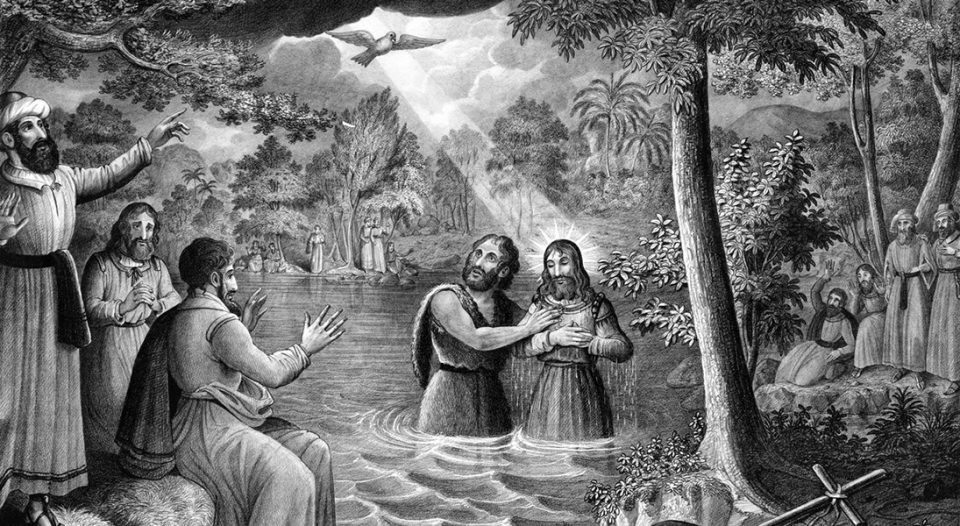Lectionary blog for Jan 13.
The Baptism of Our Lord
Isaiah 43:1-9; Psalm 29;
Acts 8:14-17; Luke 3:15-17, 21-22
As we get back to normal life after the holidays, it’s easy to forget the radical interruption of life and history that we celebrate at Christmas: Jesus, the God-human, entered our time and space. Jesus is our Immanuel, our “God is with us.” In the lectionary passages this week, we are reminded that Jesus powerfully identifies with our experiences throughout life, not just in birth and death.
Jesus as the sinless Son of God hardly needed to be baptized for the remission of his nonexistent sins. Nonetheless, he went to his relative John to be baptized, to fulfill all righteousness (Matthew 3:14-15). I love one particular phrase from Luke’s description of that baptism: “When all the people were being baptized, Jesus was baptized too …” (Luke 3:21a). Jesus, plausibly, could have exempted himself from the whole process of baptism. Barring that, he could have had a private baptism in Galilee, close to his home. Alternatively, there would have been ample opportunities to enter the purifying baths surrounding the temple complex in Jerusalem.
Instead, Jesus joined the crowds (Luke 3:7) flowing from the cities down to the Jordan to be baptized in the wilderness. Jesus chose a public and simple baptism rather than something private or extravagant. Jesus did not just wear the title “God is with us,” but he actually lived his life in such a manner that he was with “all the people” and did the things that they did, including undergoing John’s baptism in the wilderness.
Jesus’ solidarity and sharing of our experiences was hinted at hundreds of years earlier. From the book of Isaiah, God proclaims:
When you pass through the waters,
I will be with you;
and when you pass through the rivers,
they will not sweep over you.
When you walk through the fire,
you will not be burned;
the flames will not set you ablaze. …
Do not be afraid, for I am with you (43:2, 5a).
These words are reassuring and consoling even as a metaphor. But I argue that Jesus was literally present with some of God’s people in the rivers and the fire.
In the first case, Jesus’ choice to undergo baptism in a river with all the people was at least a partial fulfillment of this passage. He was literally with “all the people” as they passed through the Jordan River’s waters of baptism. Jesus is present with all of us, not bodily but nonetheless powerfully, when we welcome new members of the body of Christ as they, too, pass through the waters of baptism.
I am reminded of the story in Daniel 3 of Hananiah, Azariah and Mishael (they were renamed Shadrach, Meshach, and Abednego). When the three men refused to worship the Babylonian gods, they were thrown into a fiery furnace. However, not only did they not die, they were joined by a fourth man that Nebuchadnezzar said looked like a “son of the gods” (Daniel 3:24-25). I think Nebuchadnezzar was mostly right and that Jesus joined his three faithful servants in that furnace. When they walked through the fire, they were not burned. More than that, Jesus was with them in the fire! If Jesus was in the literal fire with these men, how much more is he present with us in the difficult times of our lives!
In this week that we commemorate Jesus’ baptism, I would like to invite you to reflect on the ways that he has been with us through difficult times and joyful times in our lives. I’ve never been thrown into a fiery furnace, thank God! But I have been through times of sadness and scorn that felt like burning. I haven’t been baptized in the Jordan (though I did stick a toe in once), but I know that Jesus was with me when I was baptized in Indiana. As we emerge from the concentrated holiday season, may we remember that Jesus is always “God is with us” and goes with us through the rivers and fires of our lives.





